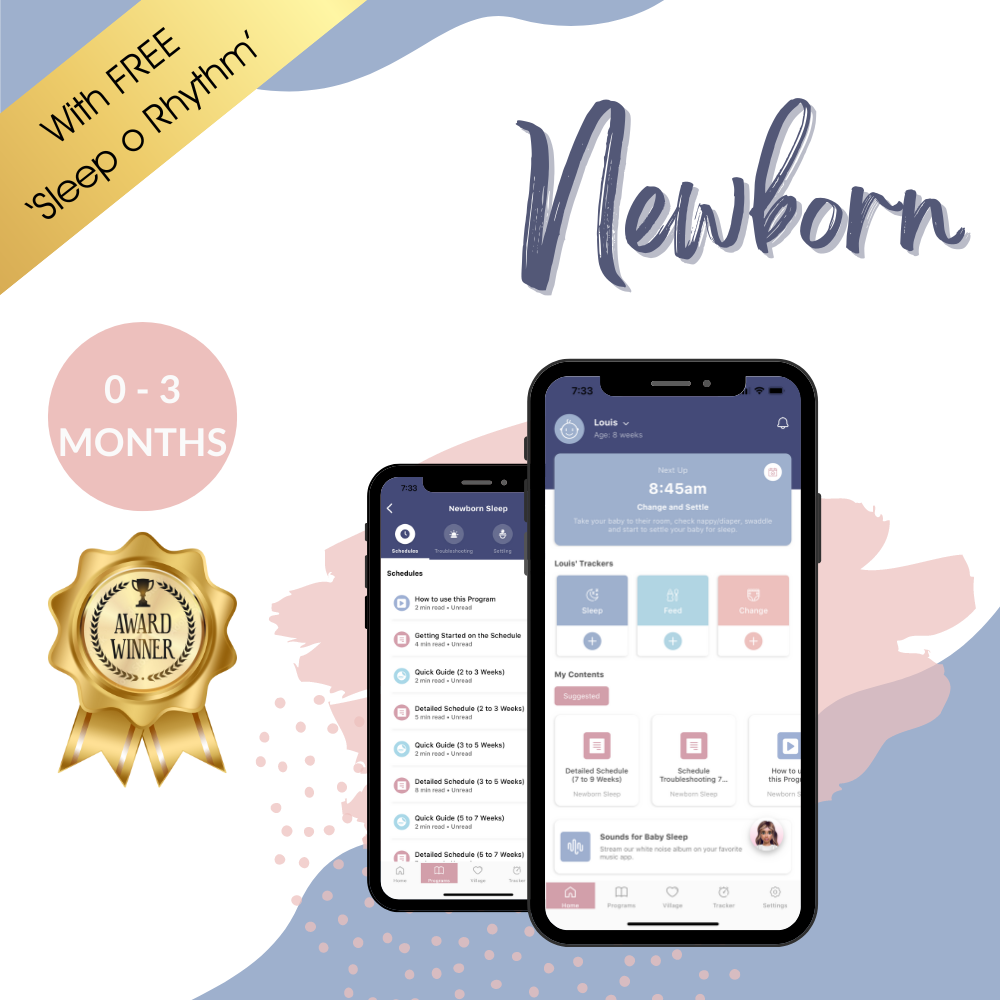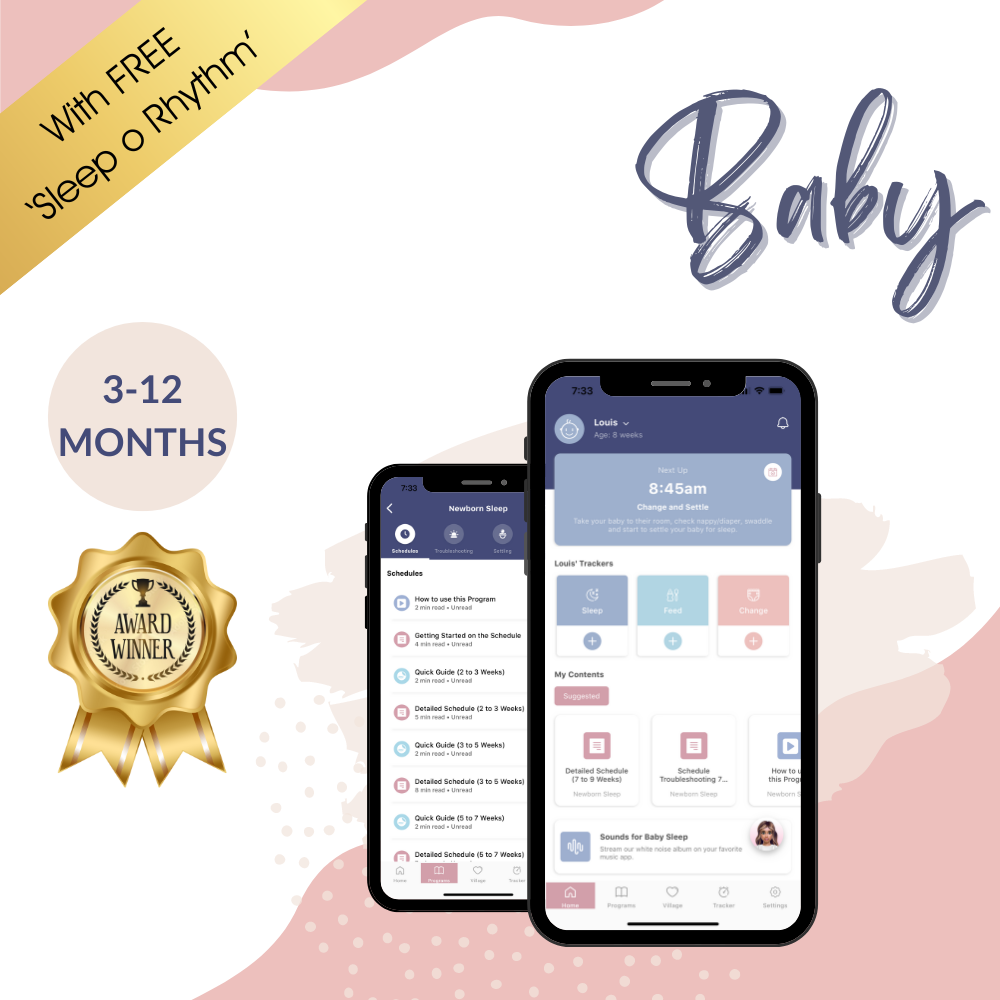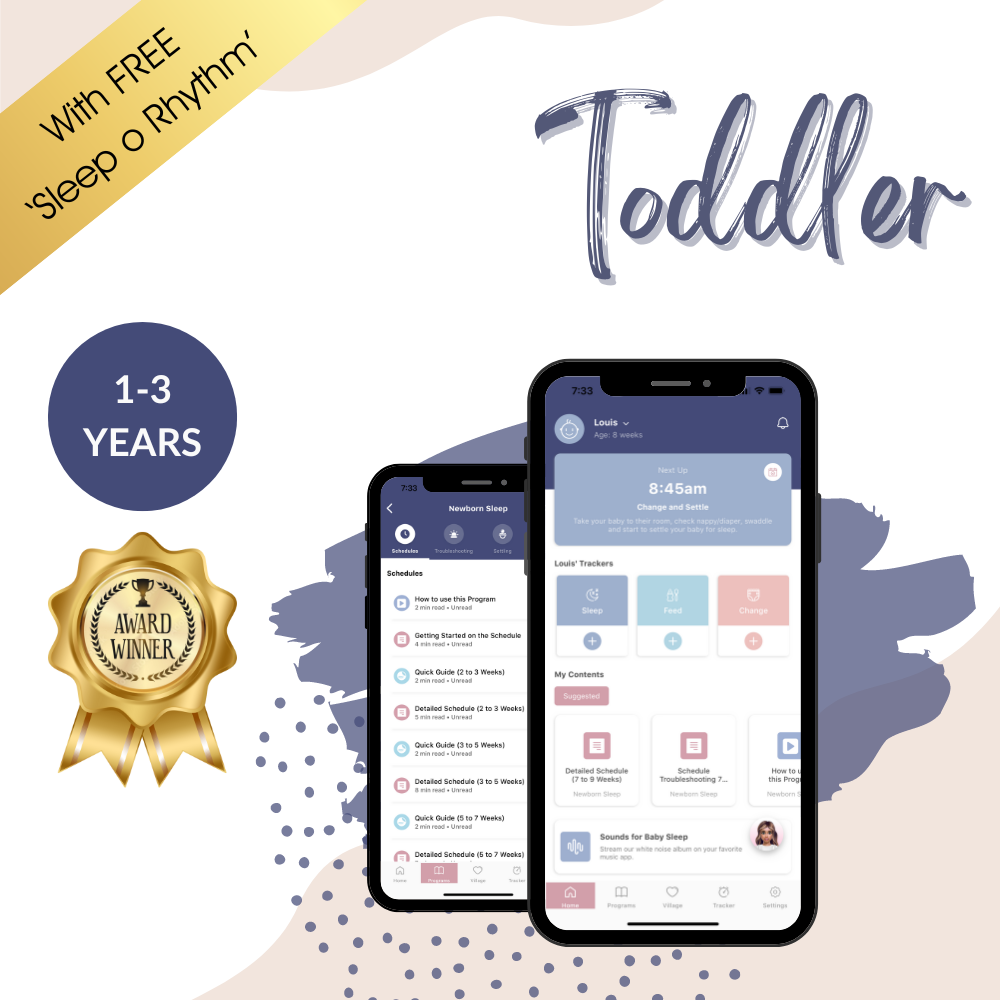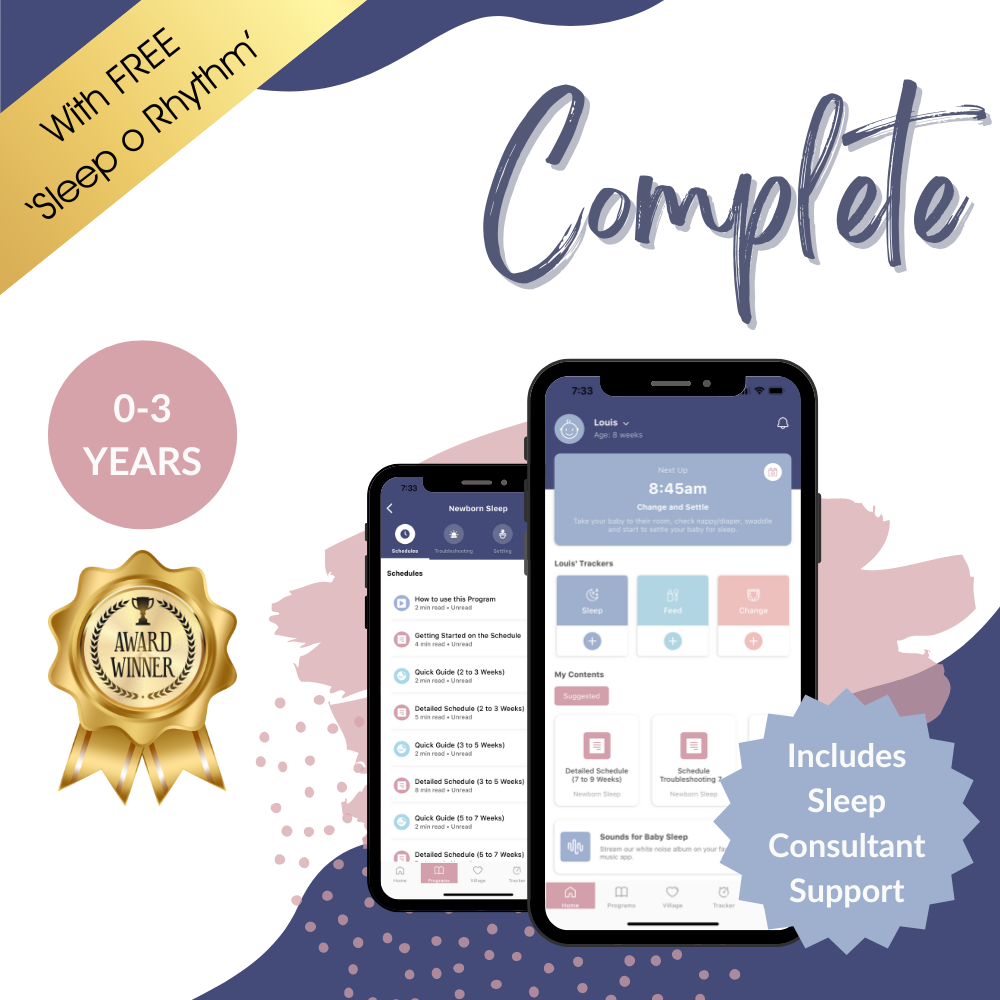
CASE STUDY: catnapping & frequent night wakes RESOLVED!
Penelope's sleep story...
It was easy early on with Penelope, since she was quite a sleepy newborn. She had been napping really well, 2 hours per nap, but then suddenly around 3.5 months she started only napping for 30-45 minutes at a time.
Her sleep had noticeably changed and mum Kate was really struck dumb by it:
I suddenly felt lost and like I didn't know what I was doing! I guess I was pulled into a false sense of security because of how easy she was in the first few months.
Penelope's nights were also a struggle. She was waking 4-5 times a night, every few hours, then Kate would feed her and she’d go back to sleep. Since Penelope was also napping poorly in the day, Kate never felt there was a chance for her to have a rest. She would just put Penelope down, go to the toilet, do a bit of housework and then she’d wake up again! They were beyond exhausted.
Feeling like the 4 month sleep regression will never end?
From the secret to great naps to self-settling methods that do not involve crying, we can help to get you through it!
Say "yes" to better sleep!
Get our Sleep Programs
Kate didn’t really know what to do or try, other than just Googling "baby sleep at 4 months"! She did read about the 4 month regression online but couldn’t see clearly enough how it was affecting them and couldn't find any answers about how to improve Penelope's sleep.
I found Little Ones by chance after seeing a post on Facebook and liked how they talked about baby sleep - it sounded so logical and sensible. I bought the Baby Program straight away!
Kate quickly realised that Penelope had indeed hit the 4 month regression and this was a big contributing factor to her catnapping during the day and frequent waking in the night.
During the 4 month regression, a baby's sleep cycles mature and they will start to wake fully between cycles. If a baby relies on a parent-led sleep association to fall asleep, they will require the same assistance to resettle back to sleep in between sleep cycles. For Penelope, this meant she was needing to be fed back to sleep between cycles because that's the only way she knew how to fall asleep.
This big permanent change in your baby's sleep signals a readiness to learn to fall asleep independently, or "self-settle". The very first factor in guiding your baby to this skill is making sure their awake windows are right for their age and that their sleep environment is going to be conducive to good settling and sleep.
Kate could see that Penelope wasn’t self-settling yet because she was feeding her to sleep or until drowsy each time. She also realised that she wasn’t giving Penelope enough awake time between naps, only about an hour or an hour and a half, which is a recommendation she had read somewhere else.
Kate started following the sleep schedule for Penelope's age, to get her nap times right, and also made some changes to her room so that it was darker. She also started playing white noise through all of Penelope's naps and at night too to help with settling and linking sleep cycles.
Since little Penelope wasn't being given quite enough awake time between naps, this meant she wasn't tired enough to sleep for longer than one sleep cycle. By extending her awake times, she was far better placed to 1) nap for longer and 2) learn to self-settle without frustration or crying.
Say goodbye to sleepless nights.
Join over 800,000 families worldwide who are enjoying excellent sleep with our Sleep Programs, created by experts in the field of pediatric sleep.
Get our Sleep Programs
Once Kate felt that they were getting into the swing of the routine (even though they were still following our catnapping routine most days), she started to work on guiding Penelope towards self-settling.
I didn't know how on earth she'd go to sleep on her own and I really though we would fail in that regard, but we used the methods in the program for fed to sleep babies and it was so much easier than I thought! I think she was ready to learn and we didn't even have to have any crying. That surprised me!
Once Penelope learned to self-settle at the start of naps and bedtime, her naps stretched out longer because she was able to link sleep cycles. Her night sleep also improved, with just two feeds overnight - a dreamfeed before Kate went to bed and one more feed before morning.
Overall, it took about 1-2 weeks to see improvements to Penelope's sleep, but Kate says it was worth the time and effort. She is far less anxious about Penelope's sleep now and has time in the day while Penelope is napping to get things done or rest herself.
I can't believe it! I actually feel on top of things, like I've totally got this and it makes me quite proud of myself. She is also definitely happier in the day because she's a lot more rested. We're all happier because of that.
Supporting your baby through this big sleep change period means working with their neurological development towards more age-appropriate sleep habits and moving away from newborn sleep expectations, which is exactly what Kate did. Making a few changes to her sleep environment (dark room and white noise) were the final pieces of the puzzle!
"Thank you so much for making so much difference to our lives! I thought it was normal to be anxious and sleep deprived and frustrated being a mum, but your Programs and the wonderful support we’ve received has shown me that there is an alternative! I can’t imagine where we’d be without Little Ones and I would recommend you wonderful ladies to anyone."
If you and your little one are in the depths of the 4 month regression and you'd like a hand getting out, our certified sleep consultants would love to help you! Check out our Little Ones App, In our Sleep Program you'll get age-appropriate sleep and feed schedules, detailed troubleshooting notes, gentle settling methods and more.





